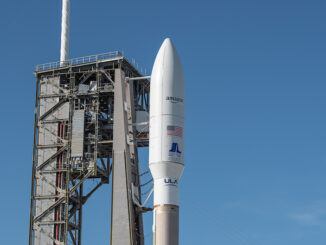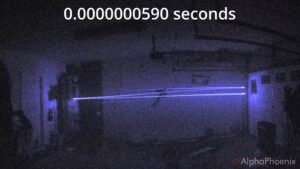
United Launch Alliance (ULA) successfully launched its first operational Vulcan rocket on August 12, 2025, marking a significant milestone for the U.S. Space Force. The mission, designated USSF-106, involved sending two military satellites into orbit. This launch represents the first national security mission for the Vulcan rocket and the 101st national security mission for ULA.
The Vulcan rocket, standing at 198 feet tall, lifted off from Space Launch Complex 41 at Cape Canaveral Space Force Station at 20:56 EDT. Propelled by its two methane-fueled BE-4 engines and enhanced by four solid-fuel strap-on boosters, the rocket produced nearly 3 million pounds of thrust. As it ascended into the night sky, the Vulcan created a stunning light display visible for miles.
Approximately 90 seconds after liftoff, the solid rocket boosters were jettisoned, followed by the first stage burnout and separation of the Vulcan’s 109-foot-tall first stage three and a half minutes into the flight. The Centaur second stage then ignited its two hydrogen-fueled Aerojet Rocketdyne RL10C engines, continuing the mission in secrecy, as is standard for military operations.
Two satellites were confirmed to be onboard the Vulcan rocket. One is a fully classified spacecraft, while the other, known as NTS-3, is an experimental navigation satellite designed by L3Harris Technologies. NTS-3 will test advanced atomic clocks and navigation technology aimed at enhancing the accuracy and resilience of Global Positioning System (GPS) data for both military and commercial applications.
NTS-3 is significant as the Pentagon’s first experimental navigation satellite since the early GPS precursors launched in the 1970s. It will operate in a geosynchronous orbit, located 22,300 miles above the equator, where it will appear stationary relative to the Earth’s surface. Unlike traditional GPS satellites, which operate at a lower altitude of 12,500 miles, NTS-3 will utilize a phased array antenna to direct signals across broad regions.
Joanna Hinks, a senior aerospace engineer with the Air Force Research Laboratory, emphasized the importance of GPS technology, stating, “With NTS-3, we are going to be experimenting with a number of different technologies that look at how we can continue to evolve and augment GPS to make sure that it remains the gold standard that our warfighters need.”
A Major Milestone for ULA
This launch not only fulfilled the mission requirements for the USSF-106 but also marked a pivotal moment for ULA. It was the third flight of the Vulcan rocket, following two successful test launches in the previous year, and the first to be certified by the Space Force for carrying high-value national security payloads.
Gary Wentz, ULA Vice President of Government and Commercial Programs, remarked, “This mission is headed directly to geosynchronous orbit and will be one of our longest missions to date. This is the sole purpose of this vehicle. It was purposely designed to support these missions doing direct injection to geo for the Space Force.”
The Vulcan rocket is set to replace ULA’s retired Delta family of rockets and the Atlas 5, which has been powered by Russian RD-180 engines. Pressure from Congress regarding reliance on foreign engines has accelerated the development of an all-American launcher. Currently, ULA has 13 Atlas 5 rockets remaining, all designated for civilian launches as the company transitions to a fully Vulcan fleet.
While ULA continues to evolve its capabilities, SpaceX remains a dominant force in the global launch market, with its Falcon 9 and Falcon Heavy rockets. SpaceX has already completed 97 launches this year alone. Despite this competition, ULA’s President and CEO Tory Bruno expressed confidence in the Vulcan’s design and capabilities.
“The first stage is, in effect, delivering the Centaur to space with a full load of propellant to go from low-Earth orbit to geosynchronous orbit,” Bruno explained. He emphasized that the Vulcan’s design allows it to launch heavier payloads more efficiently than other launch vehicles.
Bruno also highlighted the high-energy Centaur upper stage, which enables the Vulcan to directly inject payloads into high orbits without requiring the satellites to use their thrusters. This capability translates into increased mass and accuracy for military missions.
Looking Ahead
ULA is expanding its ground infrastructure and aims to launch nine missions in 2025, with a goal of ramping up to two launches per month by the end of that year. In 2026, the company projects between 20 and 25 launches, further solidifying its role in national security and commercial space operations.
The successful launch of the Vulcan rocket not only demonstrates ULA’s commitment to advancing military space capabilities but also underscores the importance of innovation in maintaining national security in an increasingly competitive space environment.







